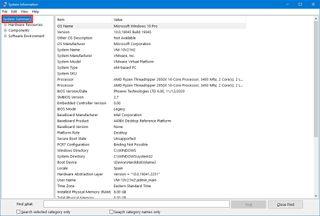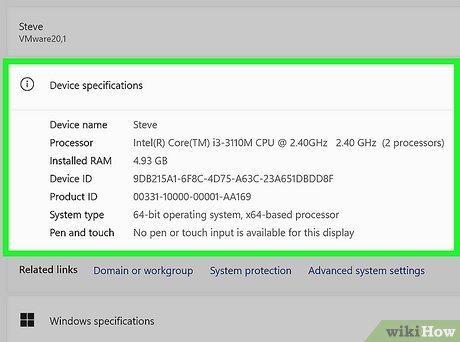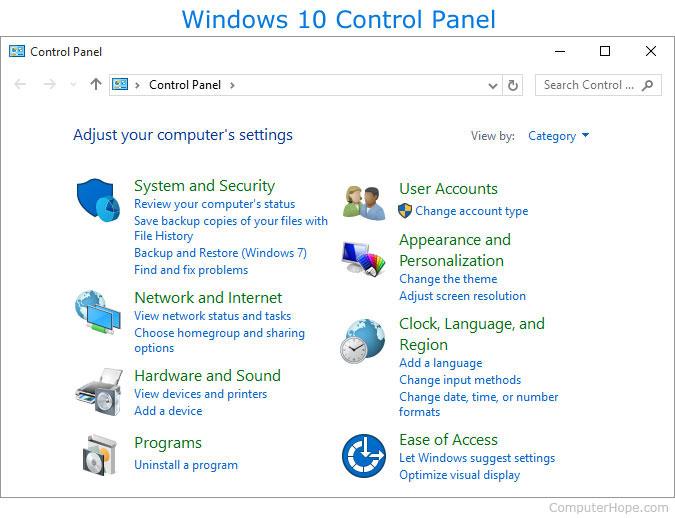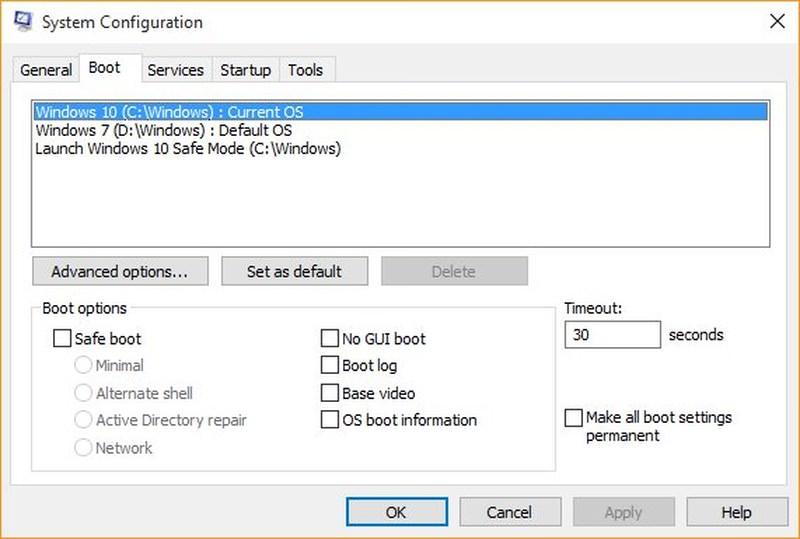Lost in the digital jungle? Ever wondered exactly what makes your computer tick,but felt like deciphering Ancient Greek was easier? Fear not,intrepid explorer! Whether you need to pinpoint your processor for a game,understand your operating system for an upgrade,or simply brag about your RAM to your tech-savvy friends,uncovering your PC’s secrets is easier than you think. This guide will arm you with the knowledge to unlock all the vital statistics hidden within your machine, transforming you from a digitally-challenged novice into a confident PC details sleuth. Let’s dive in!
Exploring Your System: A Journey into PC Information
Ever felt like your PC is a mysterious black box? You no it does amazing things, but understanding its inner workings can seem daunting.Fear not, intrepid explorer! Uncovering the secrets of your machine doesn’t require a PhD in computer science. Think of it as embarking on a digital scavenger hunt; the treasure being valuable insights into your computer’s vital statistics.
So, where do we begin this adventure? Our primary destination is the “System Information” panel. There are a few routes you can take:
- Type “System Information” into your Windows search bar and hit enter.
- Press the Windows key + R,type “msinfo32″ into the ”Run” dialog box,and click “OK.”
- Navigate through the Control Panel. (Control Panel > System and Security > System).
Once inside, prepare to be amazed! On the left pane, you’ll find a summary of critical system information.This includes the operating system you’re running (Windows 10, 11, etc.), your processor (CPU), the amount of installed memory (RAM), your system manufacturer and model, and even your BIOS version. This is your PC’s digital identity card! But, what if you’re hunting for specific details? Navigate through the categories on the left pane to find information on hardware resources, components, and your software habitat. For example, under “Components” and then “Display,” you’ll discover the make and model of your graphics card, vital for gamers and visual artists alike.
Let’s say you are curious about your system memory. here is a summary of the expected system information:
| Memory Info | Details |
|---|---|
| Installed RAM | 16 GB |
| Available RAM | 12 GB |
| Memory Usage | 25% |

Unveiling the Basics: Understanding Your Computer’s Specifications
Embarking on a digital quest? The first step in understanding your computer’s capabilities lies in deciphering its inner workings, much like a detective examining clues at a crime scene. But fear not, you don’t need a magnifying glass! Uncovering your PC’s specifications is surprisingly simple and unlocks a world of possibilities, from optimizing performance to ensuring software compatibility. Think of it as reading your computer’s DNA – it reveals everything that makes it unique.
So, how do you access this wealth of information? Windows offers several pathways, each revealing a slightly diffrent outlook on your system. The most straightforward route is through the “System Information” window.Simply search for it in the Windows search bar. This treasure trove provides a complete overview, including:
- Operating System: Your Windows edition and version.
- Processor (CPU): The brain of your computer, defining its processing power.
- Installed physical Memory (RAM): The short-term memory, affecting multitasking ability.
- System Type: Whether you have a 32-bit or 64-bit operating system.
another useful method is the “DirectX Diagnostic Tool” (dxdiag).Type “dxdiag” in the Windows search bar and press Enter. This tool shines a spotlight on your graphics card (GPU), crucial for gaming and visually intensive tasks. Need to know your graphics card’s memory? Dxdiag is your answer. It also provides audio information, which is helpful for troubleshooting sound problems. Here’s a glimpse of sample data:
| Component | Specification |
|---|---|
| CPU | Intel i5-8400 |
| GPU | NVIDIA GTX 1060 |
| RAM | 8 GB |
delve into the “Settings” app (Windows key + I) and navigate to “System” then “About.” This section offers a summarized version of your system specifications, ideal for quickly identifying your processor, RAM, and operating system. Mastering these techniques empowers you to navigate the digital landscape with confidence, ensuring your computer remains a reliable and optimized partner.

Navigating the Control Panel: Accessing Key System Details
Ever felt like your computer is a mysterious black box? You know it hums, clicks, and gets you online, but do you *really* know what’s under the hood? finding your PC’s vital stats isn’t some arcane art. it’s actually quite straightforward, and the Control Panel is your trusty map to unearth all the juicy details that define your machine.
Think of the control Panel as mission control. One of its most valuable functions is providing a comprehensive overview of your system. To get there on Windows 10 or 11,simply type “Control Panel” into the Windows search bar and hit enter. Once inside, look for the “System and Security” section, then click on “System.” This will open a window displaying essential information,including:
- Operating System: Discover if it’s Windows 10,Windows 11,or somthing else entirely.
- Processor: Unearth the power within! This reveals the type and speed of your CPU.
- Installed RAM: Know how much memory your system has to play with.
- System Type: Is it a 64-bit or 32-bit operating system? This is crucial for software compatibility.
- Computer Name: What your PC answers to (you can change this, incidentally speaking!).
But wait, there’s more! Sometimes, you need even finer-grained information. Such as,what version of Windows you are running? Here’s a breakdown of where you can find more granular details,sometimes requiring a small dive into settings.
| Information Needed | Path to Find |
|---|---|
| Windows Version | Control Panel > System and Security > System |
| graphics Card | Device Manager > Display Adapters |
| Storage Space | File Explorer > This PC |

Utilizing built-in Tools: Leveraging Windows Features for Insight
Here’s a secret whispered amongst tech wizards: the answers you seek are often already residing within your machine, hiding in plain sight! Forget downloading fancy apps or relying solely on external websites. Windows, in its infinite wisdom, provides a treasure trove of information about your PC, just waiting to be unearthed. Think of it as an archaeological dig, only instead of fossils, you’re excavating processor speeds, memory specifications, and operating system versions.
So, how do we channel our inner Indiana Jones? let’s start with the trusty “System Information” tool. Simply type “msinfo32” into the Windows search bar and hit enter. A window will appear, revealing a wealth of knowledge – your operating system version, system manufacturer, system model, processor type, BIOS version, and more. It’s like reading your computer’s resume! For a quicker, less comprehensive overview, you can right-click the “Start” button and select “System.” This displays a simplified version of essential details.
Want a more granular view? Dive into the “Device Manager.” you can find it by searching for it in the start menu, or through “Control Panel”. Here, you’ll find a complete inventory of your hardware components, from your graphics card to your network adapter, all neatly categorized. Need to know the exact model of your wireless card or the driver version? Device Manager is your personal hardware encyclopedia. Think of it as a deep dive into the nuts and bolts of your machine.let’s explore the mystical realm of the Command Prompt! A simple command, “systeminfo,” typed and executed, will produce a detailed report about your PC’s configuration. It’s a bit more raw and technical than the graphical interfaces, but sometimes, that’s exactly what you need, more info than the Graphical System Information, in one place. And for those interested in the performance details of their CPU, the Windows Performance Monitor will give you deep insight.
| Information Category | Example Detail |
|---|---|
| Operating System | Windows 11 Pro |
| Processor | Intel Core i7-10700K |
| Installed RAM | 32.0 GB |
| System Type | 64-bit operating system, x64-based processor |
- System Information: Rapid and easy overview.
- Device Manager: Hardware details and drivers.
- Command Prompt: Detailed technical report.
- Performance Monitor: Deep insights into performance

Third-Party Solutions: Enhancing Your Knowledge with Additional Software
Ever felt like a detective searching for clues about the very device beneath your fingertips? Unearthing your PC’s specifications – its make, model, and the intricacies within – can feel like deciphering an ancient scroll.But fear not, intrepid explorer! While Windows offers built-in tools, sometimes they don’t quite give you the full picture. That’s where third-party software steps in, acting like a magnifying glass to reveal the hidden details.
Imagine you’re troubleshooting a game that keeps crashing. Knowing your graphics card model is crucial, but Windows’ Device Manager only gives you a generic name. Or perhaps you’re upgrading your RAM and need to know the exact type installed. These are moments when dedicated software truly shines. They provide in-depth reports, frequently enough going beyond the surface-level information Windows provides. Think of them as specialized informants, each with their own area of expertise, ready to spill the beans on your system’s secrets.
Here’s a glimpse of what these digital sleuths can unearth:
- Detailed CPU Information: Clock speed, core count, and even thermal readings.
- Memory specs: From total capacity to the exact speed and timings of each module.
- Storage Deep Dive: Serial numbers, drive health, and even SMART data (which can predict potential failures!).
- motherboard Insights: Manufacturer, chipset, and even available expansion slots.
To illustrate the power of these tools,let’s consider CPU-Z vs Windows System Information:
| Feature | Windows System Information | CPU-Z |
|---|---|---|
| CPU Name | Intel(R) Core(TM) i7-XXXX | Intel Core i7-XXXX (Detailed Model) |
| Real-Time Clock Speed | no | Yes |
| Cache Information | Limited | Detailed L1,L2,L3 |
Notice the difference in detail? While Windows provides basic info,CPU-Z dives much deeper. This added granularity can be invaluable for troubleshooting, benchmarking, or simply satisfying your curiosity about your machine.
Keeping Your Data Safe: Privacy Considerations When Accessing System information
Peeking under the hood of your PC to scope out its specifications is usually a harmless act. However, like leaving your car unlocked, sometimes a little information left exposed can lead to unwanted attention.When you’re chasing down those specs, be mindful of what you’re sharing, and who you’re sharing it with, especially online. System information, while seemingly innocuous, can inadvertently reveal details that malicious actors coudl exploit. Think of it like this: knowing your processor type or operating system version gives someone a starting point to craft targeted attacks. Keep them guessing!
So, what details are we talking about? Here are some prime examples that you might stumble across when uncovering your PC’s treasure trove:
- Operating System: Windows version and build number.
- Processor: Model and speed.
- RAM: Total memory installed.
- Graphics Card: Model and driver version.
- Network Information: Public IP address (especially when troubleshooting).
Remember, the internet is a public space. Sharing screenshots or detailed system reports on forums (even for help) can inadvertently expose sensitive data. Before posting, take a moment to scrub any personally identifiable information. Consider using a generic system description or carefully editing images to remove possibly risky details. A little caution goes a long way!
Sometimes, you need to share certain information for legitimate purposes – like submitting a support ticket to a software vendor. In these cases, transparency and security go hand-in-hand. Below is an example of system data that should NOT be shared!
| Component | Sensitive Data |
| User Account | Full name |
| Network Adapter | MAC Address |
| Disk Volume | Serial Number |
Look for privacy options or anonymization tools provided by the vendor to redact sensitive details before sending your report.By adopting these practices, you can safely leverage these tools for support and assistance without compromising your privacy!
Wrapping Up
So, there you have it. Navigating the labyrinthine corridors of your digital dwelling to uncover its deepest, darkest (well, not that dark) secrets is now within your grasp.Armed with these techniques, you’re no longer an explorer without a compass, but a confident surveyor of your silicon estate. Go forth, discover, and may your future tech adventures be filled with knowledge and minimal frustrating searches! And remember, knowledge is power, even when it’s just knowing how much RAM your computer has. Keep exploring!
